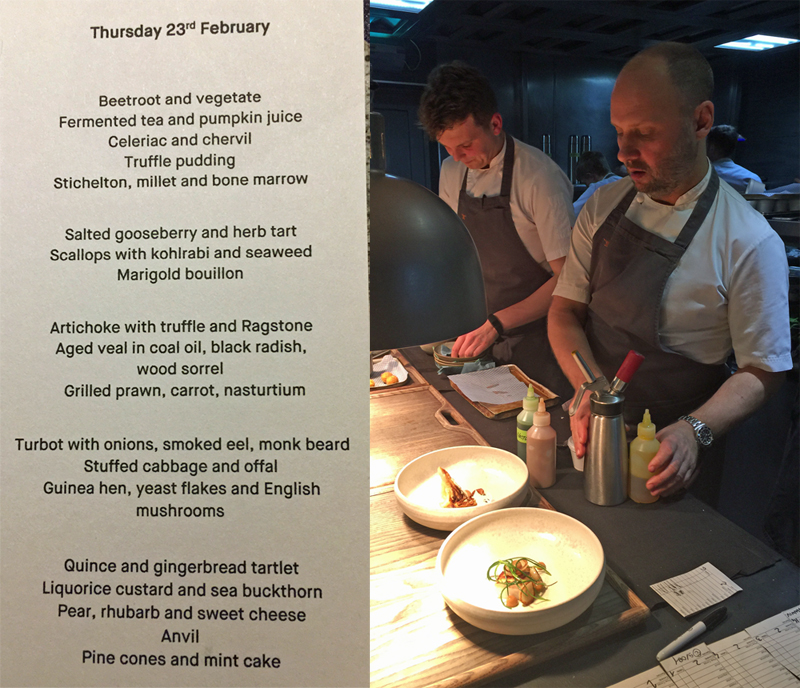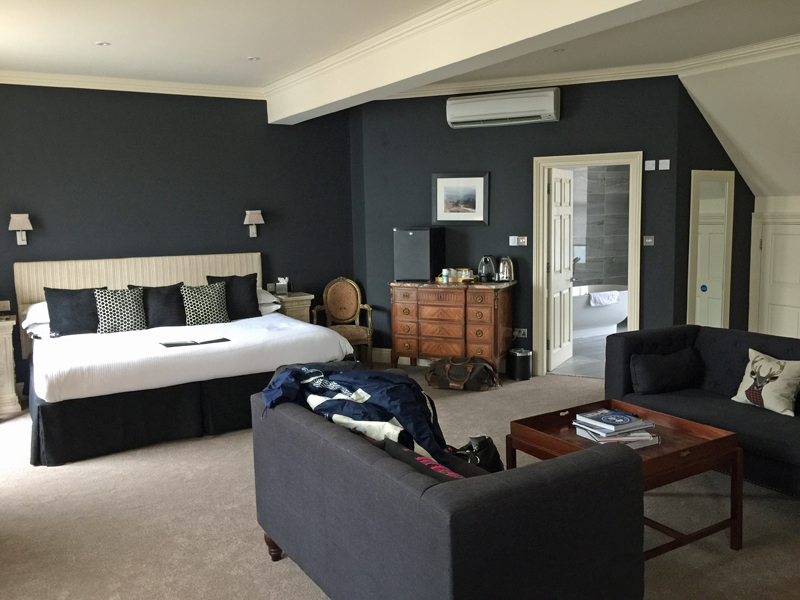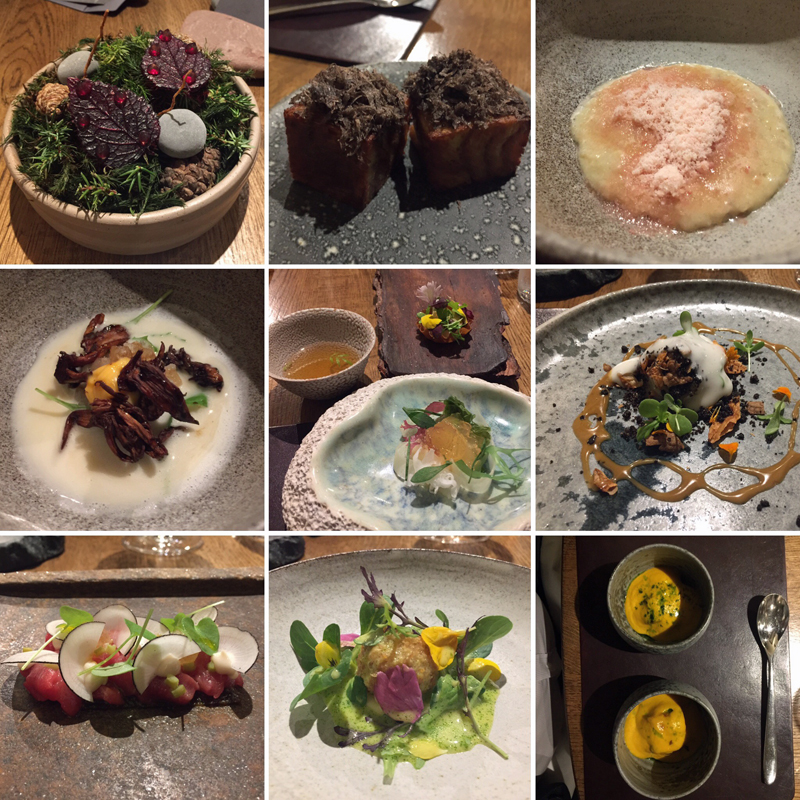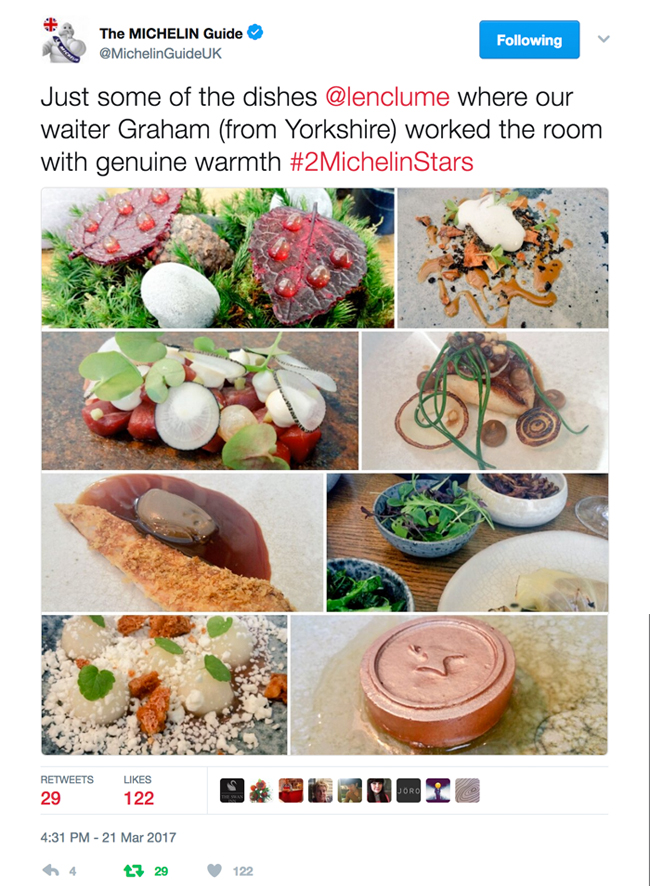
The evening of Wednesday 22nd February 2017 was fraught. My own car was in for insurance claim repairs after a minor accident and I had just taken receipt of a substitute hire car: A Mercedes C Class 2.2 Diesel ‘66’ Registration. Even though I’m no Jeremy Clarkson, I do like a nice car and I may from time to time have been known to throw a paddy over hot food.
This aside, a brief review of the BBC Weather App on the iPhone showed the prospect of Storm Doris. Doris was due to lash across a band of Britain stretching between South of Birmingham to North of Liverpool, for eight hours solid during the forthcoming day.
So the journey from our home on the Surrey, Hampshire, Berkshire border to Cartmel in Cumbria involved a direct trip up the M40, M42 and M6. In parts a somewhat bumpy ride but nevertheless a straight run, which in spite of including a cautious 5.30am start and a three stop strategy, led to an arrival as promised by Mid-day.
Cartmel is beautifully described by its own village website (cartmelvillage.com) as steeped in history but not trapped in time: The history is partly medieval, dating from the 12th Century Priory Church, while many other architecturally intriguing and aesthetically pleasing buildings date from between the 16th to 18th Centuries: The not trapped in time refers to the shops, inns and eateries like Simon Rogan’s internationally recognized and trailblazing top end restaurant, L’Enclume.
L’Enclume, meaning Anvil, was formed in 2002 from the shell of buildings that had previously been an antique store.

You might be forgiven for thinking that the L’Enclume of 2017 is in seven parts! Or at least the “Simon Rogan Cartmel Experience” as having seven parts: Starting with the warm and welcoming reception that provides a friendly and hospitable arrival for those staying over, there are also eight well appointed, comfortable rooms housed within this building: The second is next door where the diner will find Rogan & Co, a more informal restaurant that doubles up as a breakfast space for staying guests.
The third aspect is found walking into the cobbled Square from reception where our beautiful room (I would call it a junior suite) was located upstairs above a coffee shop.

Rogan has gradually expanded his ‘with rooms’ element of the offering over time: The next part is found as you walk towards the archway from the Square and find the soon to be opened L’Enclume shop where visitors will be afforded the opportunity to purchase anything associated with the L’Enclume experience, from pots and pans through kitchen technology to chef’s jackets and aprons.
As you make your way through the arch from the Square and into Cavendish Street you will find the elements of the star attractions of L’Enclume, the Michelin two star restaurant, which itself houses six further rooms, and next door to the restaurant, the development kitchen headquarters of Rogan’s empire, Aulis.
A short five minute drive away is the 12 acres ‘Our Farm’ site that provides much of the livestock, fruit, vegetables, herbs and flowers that appear on the assorted plates served in the restaurant. Simon believes in appreciating the quality of good provenance, let’s call it ‘field to fork,’ he was too modest to have a particular soundbite for ‘Our Farm’; but what he categorically does not do is pay a farmer to allow him to say that he owns a farm, he really does own a farm, and has staff of L’Enclume, including both new and experienced chefs doing the farming. This is to ensure optimum respect for- and understanding of- the ingredients that go onto the plate at L’Enclume at any time.

The top end of the restaurant industry, like any other, is a fluid market, adapting to trends and customers’ demands in ever shorter time cycles. Thirty years ago you would have found the remnants of Nouvelle Cuisine, represented by the long (later to be called) tasting menu of smaller plates, ten years later and the raison d’être of tasting menus had changed to allow customers to try smaller versions of a chef’s best selling larger plates. These larger dishes formed the absolute star of the show, typically with six, six and six choices of starter, main and dessert (or in many cases a much longer repertoire of choices of dishes) and these were the ones which formed the ‘signature’ of the chef, as described by guides like Michelin.
For a variety of reasons, around ten years ago, the starter, main and dessert concept started to fade and the tasting menu came to the fore. There are a variety of logical reasons for this: The tasting menu offers more variety of creative food to try for the customer balanced by certainty in the kitchen of what will be cooked, which means: less wastage, more efficiency and better consistency which in turn allows either keener pricing from better GP on a plate, or more labour intensity, or more luxurious ingredients or a combination of these factors.
As the clock has ticked on, this apparent win/win formula for restaurants and their customers, the market has continued to evolve. There is that precious commodity – time! People don’t have enough of it! Classically four hours plus, turning no tables, for a special and expensive meal out was fine. Nowadays the feeling in the industry is that two and a half to three hours is a sensible upper limit to aim for a sitting. Further, customers and importantly repeat customers, do like choice and there is a subtle move back to the three course format in the high-end market.
L’Enclume has been a tasting menu trailblazer and continues to deliver on a significant scale to this audience. Cleverly, Rogan has tapped into the latest development in customer need: The circa eighteen-course star attraction tasting menu arrives in what I would call ‘sections’ in that there may be collections of three small plates which offer harmonious tasting experiences. This has the impact of reducing dining time to around two and a half to three hours but also the complementary nature of the dishes ensures that, for example, the opportunity for piquancy in one dish to overwhelm a subtle and elegant flavour in another is avoided.

Three further on going trends in the top end market for restaurants are accessibility (relaxed, friendly, welcoming and engaging social meeting places where you happen to have something to eat), simplicity (the re-emergence of the bistro/brasserie) and value-add. In short, these three elements encompass the front of house, the cooking style and the way in which some form of theatre is added to the dining experience.
In Thomas Mercier (See Interview) Rogan has made an astute hire – a past master at creating an atmosphere of warmth to go with what I would describe as ‘relaxed formality’ to previously more formal dining rooms like Coworth Park, Cliveden or The Vineyard. While L’Enclume naturally has a far more vibrant atmosphere than these more classical eateries, Thomas has experience of the value-added side; while managing the logistics of a similarly tricky listed building, he planned an eating ‘journey’ while general manager at Stovells where the cellar, ‘Gin room’ and larder become part of the value-added dining experience. L’Enclume also embraces this value-added theatre by chefs introducing certain dishes in just the right amounts to hit the customer satisfaction spot. Good to see harmony in vision and style between staff and restaurant, which can only bode well for the future.
The food at L’Enclume engages sight, taste, touch and smell. The presentation of dishes is beautiful; the tastes are clear, deep and strong; texture and temperature are cleverly employed; so too the rich aromas of certain dishes.

While Rogan enjoys the technology of food, it is not for the sake of the technology that dishes appear. Simon admitted that for customers and guides alike there was a period some years ago where he became influenced by many different factors, including Southern Spain as well as latest technologies and the menu was changing every couple of weeks with experimental style dishes.
With maturity, this has long gone and while technology is important, Simon sees it more as a tool to achieving the right “simplicities of flavour” in food on a plate rather than to intellectually challenge the guest. At the same time, the axiomatic complexity of some creations is facilitated by an acute knowledge of ingredients, technologies and their evolving efficacy in a multi-Michelin starred restaurant environment.
Where Heston Blumenthal is taking an exceptionally strong technical base and leading his (The Fat Duck) restaurant on a particular ‘theatrical journey,’ Rogan you feel has all the technical knowhow but seeks to more than tap into a nerve, or touch particular points but instead to continously wrap his restaurant offering around the heartbeat of the high end restaurant industry.
It was interesting to note from twitter that The Michelin Guide had visited L’Enclume to keep a steady eye on progress. Indeed, take the upper quartile of the twenty plus GB&I Michelin two starred restaurants, award one a third Michelin Star and then view the Twitterati response: Within an hour there would probably be a positive consensus that Michelin’s judgment was just, true and fair. L’Enclume would be a prime example of a restaurant in that category for a variety of valid reasons.

They say it is the artist and not the forger that gains the accolades and further that imitation is the sincerest form of flattery. In Simon Rogan’s case, when looking back on his contribution some time in the future, his legacy may best be defined by the protégé talents he has given wings to, achieving their own signatures in the industry, while at the same time reaching the heights of recognition himself.



